Marine Environmental Preparedness in Denmark: Introducing the Danish Royal Navy & Naval Home Guard (1/3)
Written by Kia Friis Petersen, Danish Civil Protection League
Introduction
In the last two decades, there has been two major oil spills – Baltic Carrier in 2001 and Fu Shan Hai in 2003 – and several smaller spills in Denmark. Much of the national preparedness is thus based on the experience that was formed at the beginning of the century.
According to the Danish Act for the Protection of the Marine Environment, the Danish Defence is responsible for oil spill response at the sea and in shallow water areas. The municipalities are responsible for oil spill clean-up in coastal areas harbors. The responsibility areas of the two authorities are divided by the normal water baseline.
In this article series, the different stakeholders who participate in the oil spill response in shallow waters and coastal areas in Denmark and their cooperation are presented. The stakeholders include Navy’s Marine Environmental Response, municipality fire and rescue services, Naval Home Guard, Danish Emergency Management Agency department, and harbors. The Navy’s Marine Environmental Response and Naval Home guard are introduced first:
The Danish Royal Navy
Organization
Navy’s Marine Environmental Response is a military organization with full-time employees. It is located at the two naval bases in Korsør and Frederikshavn and governed by the Danish Defence Command (DCD) that coordinates the Army, Navy, and Airforce.
Ships and equipment
The Navy has seven environment units as well as three barges that can be used to contain the collected oil.
The two Sea Truck Class ships Marie Miljø and Mette Miljø are manned by six persons each. Both ships have two crews, and they are prepared to leave within one hour at all times. They have a reach of 1,000 nautical miles and a top speed of ten knots.
Gunnar Seidenfaden and Gunnar Thorson are Supply Class units and manned by sixteen persons each. They have only one crew per ship but can sail with only twelve persons and are prepared to sail within sixteen hours. The reach is 3,500 nautical miles and top speed twelve knots.
All four oil recovery vessels are equipped with oil booms, pumps, and skimmers to contain and collect oil at sea and in shallow waters. They also have cranes making it possible to use the oil booms without a helping ship − a so-called sweep in which the oil is contained along the side of the ship.
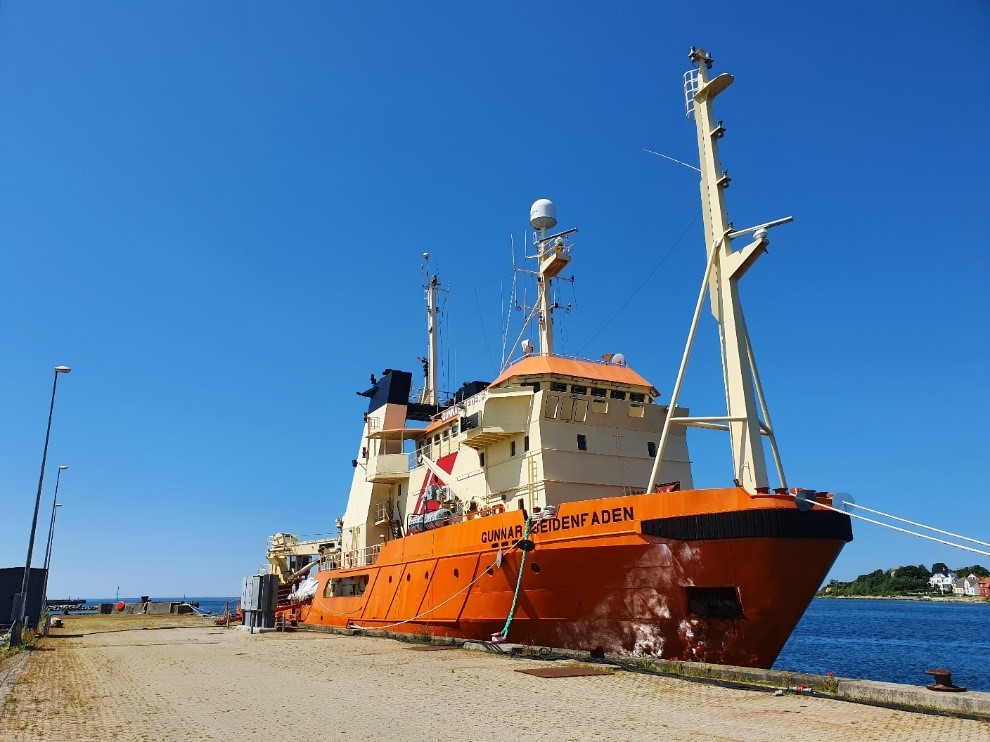
Three smaller vessels – Miljø 101, Miljø 102, and the belt skimmer Miljø 103 – do not carry oil booms aboard but can drag them when they are in use. Whereas the larger ships have a draught of respectively 2.3 metres and 3.9 metres, the Miljø 103, for instance, has a draught of only 0.85 metre, making it more efficient for spills in shallow waters.
The Navy also has a mobile environment preparedness team, which consist of three people. They can respond on short notice and assist with e.g., oil samples at a spill for testing and as evidence material if there is a suspicion of illegal discharge.
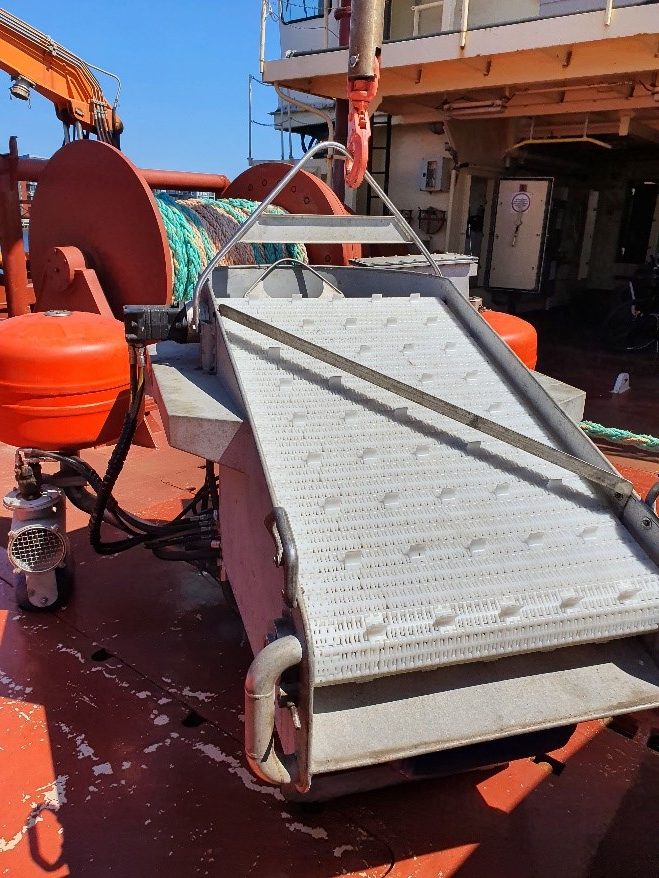
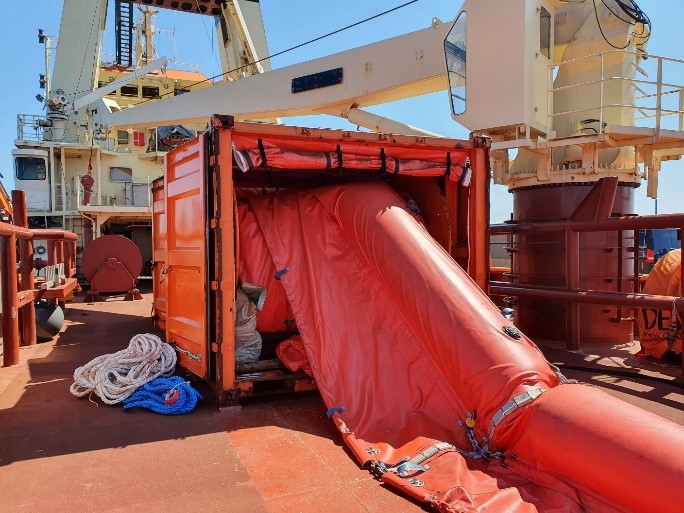
Activation and role
The Maritime Environmental Response is activated by the Maritime Assistance Service (MAS) in Karup. MAS can be contacted directly from the ship needing help – or others who have spotted an oil spill. As prescribed in the Danish Act for the Protection of the Marine Environment, the Navy is responsible for coordinating all responses of pollutions at sea and in shallow waters. Fortunately, large oil spills are not common, so the two large ships Gunnar Seidenfaden and Gunnar Thorson have not been activated for the same oil spill in Danish waters since the Baltic Carrier accident in 2001. However, they still sail the waters most days a year for monitoring and practicing.
The Naval Home Guard
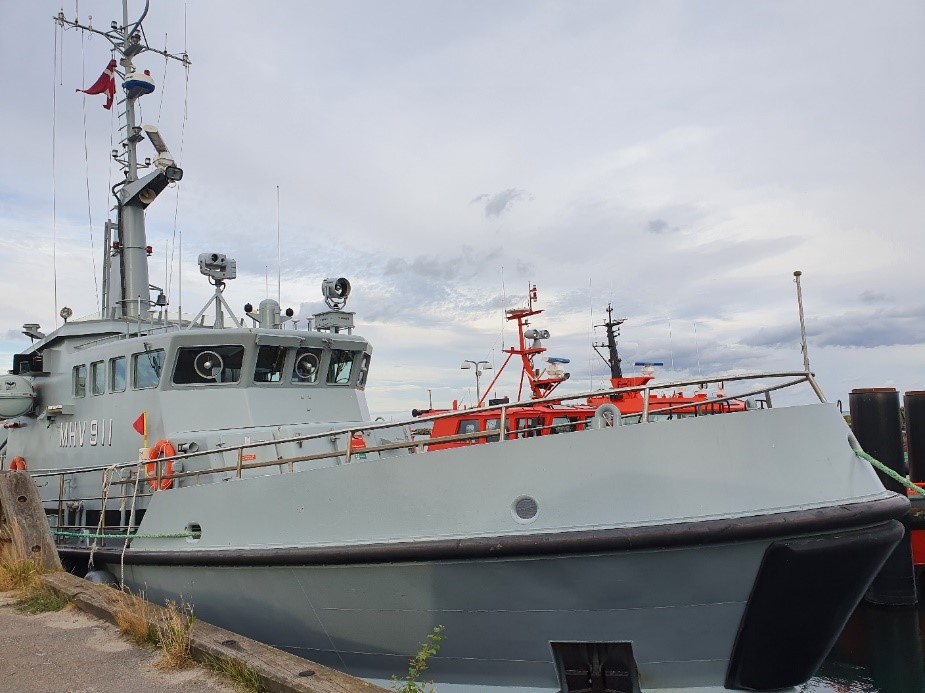
Organization
The Naval Home Guard is a volunteer organization under the military. Their primary task is to assist the Navy, police, and other authorities with operations at sea. The entire Home Guard counts 16,000 volunteers, of whom around 5,000 are volunteers in the Naval Home Guard. They are divided into 30 flotillas all along the coasts of Denmark.
Ships and equipment
The Naval Home Guard has 30 ships of three different classes. All ships have sampling boxes aboard, which can be used to take samples of oil and other pollutants. The ships are also equipped with an RHIB (rigid hull inflatable boat) with a top speed of 30 knots, thus ensuring fast transport and a quick operation start. Thirteen of the ships are large enough to have oil booms aboard as well.
Each ship has several staff groups of 12 people, but they can sail with fewer as well. Having more than one staff for each ship helps to ensure the readiness to sail within one hour – even though all are volunteers. Currently, the Naval Home Guard is also testing a new type of ship, the MIF-M. They are smaller and quicker but should still be able to solve the same kinds of tasks. Furthermore, with a staff of only four people, they can set off from the harbor even quicker.
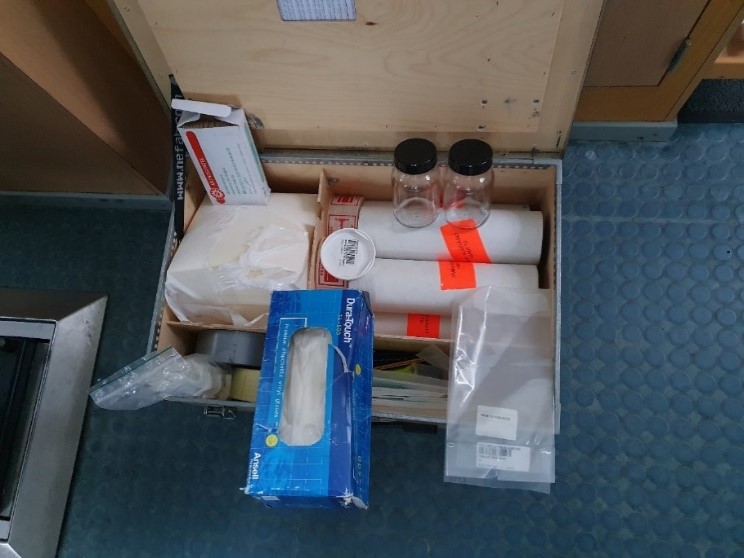
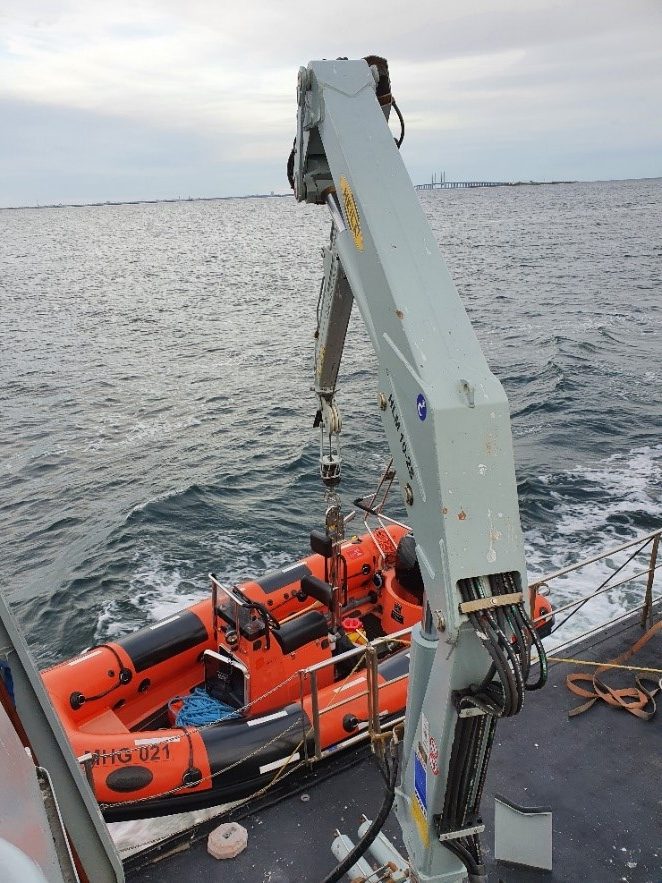
Activation and role
The Naval Home Guard can be activated by the Navy through MAS or the Joint Operation Centre (JOC), the Police, and other authorities depending on the task. In case of an oil spill, MAS will activate the nearest ship and its staff. With a response time at a maximum of one hour and often half the time, the Naval Home Guard is typically the first to arrive. Their role is to secure evidence by taking samples from the spill and to start containing it if the ship has oil booms aboard. Otherwise they will wait for another ship to arrive and then help by dragging their oil booms to collect the oil.
It is only a few times a year that an actual oil spill operation is initiated. However, the ships are often sent to possible oil spills spotted by other ships or the Air Force’s aircraft to take samples. In the spring and summertime, it is usually pollen that lays as a shiny layer on the water, looking like oil.
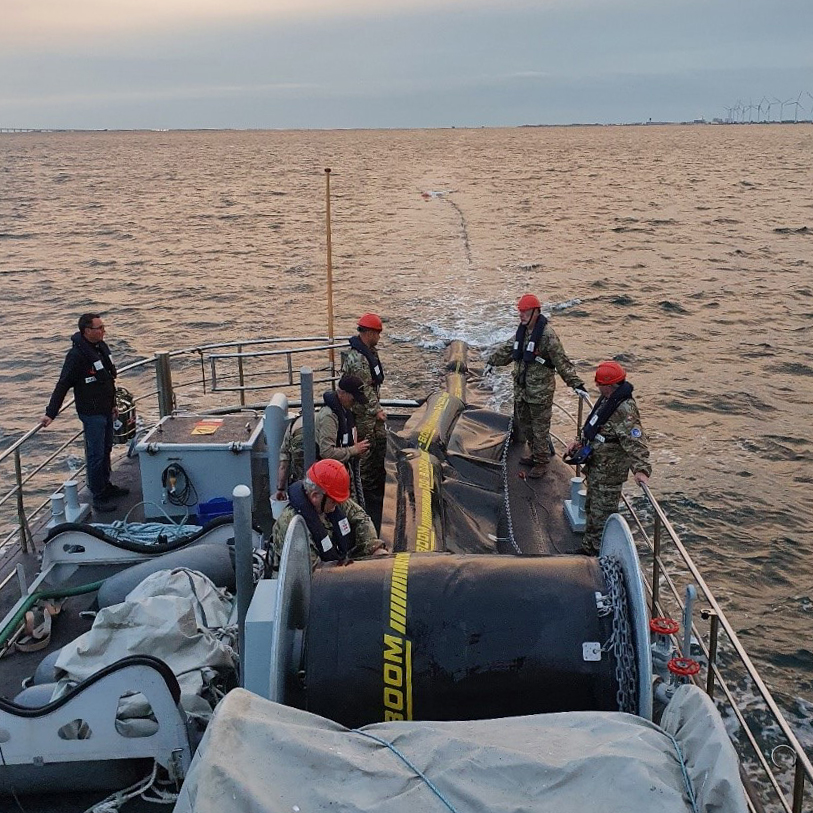
In the next part, the roles of the Danish Emergency Management Agency, Elsinore Municipality Fire Department, and Brøndby Harbour are introduced.
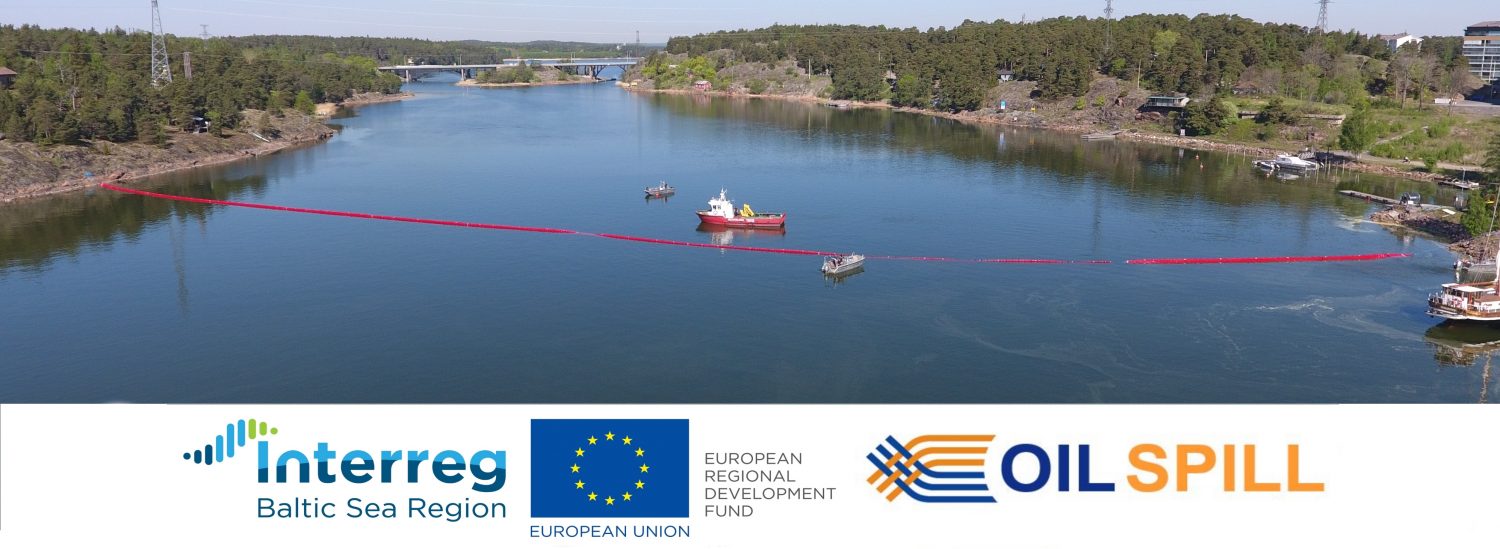
Leave a Reply